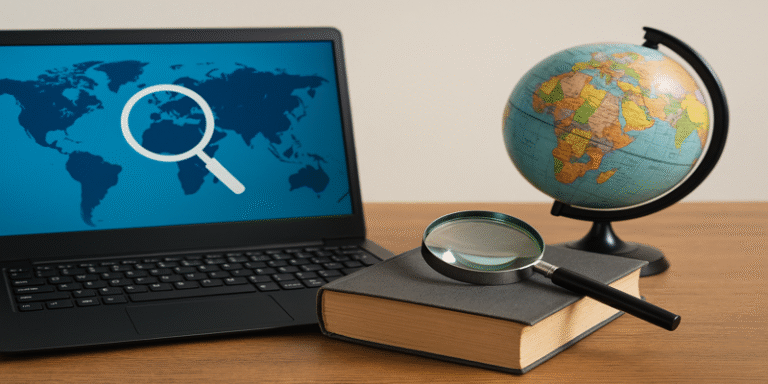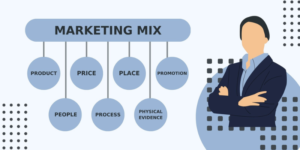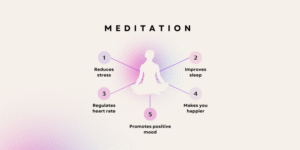In the rapidly evolving global business landscape, understanding the macroenvironmental external factors has become an essential strategic practice for organisations seeking long-term competitiveness. Traditionally, the PESTEL framework—which examines Political, Economic, Social, Technological, Environmental, and Legal factors—has been central to environmental scanning (Johnson et al., 2020). However, in an increasingly interconnected world, the scope of macroenvironment analysis must extend beyond PESTEL, incorporating additional dimensions such as globalisation, digital transformation, sustainability, demographic change, and ethical governance. As argued by Rahman, Ayentimi and Wickham (2025), organisations that adopt a holistic macroenvironmental perspective are better equipped to anticipate external shocks, seize opportunities, and build resilient strategies in complex global markets.
1.0 Globalisation and Interconnected Economies
Globalisation remains one of the most profound external forces shaping the modern macroenvironment. Defined as the increasing interdependence of economies, markets, and cultures, globalisation influences nearly every aspect of business (Goswam, 2024). It has facilitated the expansion of multinational corporations (MNCs), enhanced cross-border trade, and accelerated knowledge transfer. However, globalisation also introduces volatility, as firms are exposed to geopolitical risks, supply chain disruptions, and regional economic disparities (Nyamboga, 2024).
For instance, the COVID-19 pandemic exposed vulnerabilities in global supply chains, prompting many firms to consider reshoring or regional diversification strategies. Similarly, trade tensions between the United States and China continue to impact global manufacturing patterns. As Makvandi (2024) suggests, effective macroenvironmental analysis must account for global economic dependencies and the power shifts towards emerging markets such as China, India, and Brazil. This redistribution of economic power has created a multipolar global economy, altering competitive dynamics and regulatory frameworks.
2.0 Technological Advancements and Digital Transformation
Another transformative macro factor is the rapid pace of technological innovation. The convergence of artificial intelligence (AI), blockchain, Internet of Things (IoT), and cloud computing has revolutionised how organisations operate, compete, and engage customers (Schilling, 2020). The rise of digital ecosystems allows firms to leverage big data analytics to enhance decision-making and operational efficiency.
For example, Amazon’s use of predictive algorithms to optimise logistics illustrates how technology enables competitive advantage through operational excellence. Similarly, financial institutions are integrating blockchain technologies to enhance transparency and trust in transactions (Ben Ali & Boukettaya, 2023). Nonetheless, the digital divide—especially between developed and developing economies—poses challenges to inclusive growth (Panda & Panda, 2018).
Beyond efficiency, technological advancement also creates ethical and social implications, such as data privacy, cybersecurity, and algorithmic bias. As Ruwanika and Massyn (2024) argue, businesses must adopt responsible innovation frameworks, aligning technology deployment with societal and environmental objectives. Thus, the technological macroenvironment requires firms to not only innovate but to do so sustainably and ethically.
3.0 Environmental Sustainability and Climate Responsibility
In the 21st century, environmental sustainability has evolved from a peripheral issue to a core strategic imperative. Rising concerns over climate change, resource scarcity, and carbon emissions have intensified scrutiny from governments, investors, and consumers. According to the United Nations’ Sustainable Development Goals (SDGs), companies are expected to contribute to global sustainability agendas through corporate social responsibility (CSR) and environmental, social, and governance (ESG) performance (Khan, Ali & Petrillo, 2023).
The macroenvironmental pressure for sustainability is evident in industries like automotive manufacturing, where the shift to electric vehicles (EVs) is driven by both regulatory standards and consumer expectations (De Sousa & Castañeda-Ayarza, 2022). Similarly, the global fashion industry faces increasing demand for sustainable production and ethical sourcing, leading companies like H&M to adopt circular economy practices. As dos Santos et al. (2025) note, the integration of renewable energy and green technologies is no longer optional—it is vital for long-term competitiveness.
Moreover, firms are expected to implement carbon neutrality goals and sustainability reporting frameworks, such as the Global Reporting Initiative (GRI). This shift illustrates that the macroenvironment now rewards firms that combine economic performance with environmental stewardship.
4.0 Demographic Shifts and Cultural Dynamics
Beyond the traditional PESTEL categories, demographic and cultural transformations represent crucial macroenvironmental forces. Population ageing in advanced economies contrasts sharply with youthful populations in emerging regions, creating diverse market dynamics (Vlados & Chatzinikolaou, 2019). For example, Europe and Japan face labour shortages, while Africa’s growing young workforce presents opportunities for innovation and digital entrepreneurship.
Cultural factors also affect global business operations. The rise of multicultural consumer identities challenges firms to adapt marketing and product strategies to varied social norms and expectations. As Ahmed (2024) observes, successful multinational enterprises increasingly rely on cross-cultural intelligence and inclusive communication strategies to sustain global competitiveness.
Moreover, the acceleration of remote work and digital collaboration following the COVID-19 pandemic has reshaped cultural norms around work-life balance, flexibility, and productivity. Understanding these demographic and cultural macro factors allows organisations to anticipate workforce trends and align their human capital strategies with evolving societal expectations.
5.0 Geopolitical and Ethical Governance Factors
The global macroenvironment is also shaped by geopolitical tensions and governance structures that go beyond the scope of traditional political analysis. Issues such as data sovereignty, digital regulation, and trade protectionism influence strategic decisions on investment and expansion (Rahman et al., 2025). For example, the European Union’s General Data Protection Regulation (GDPR) imposes strict rules on how companies handle consumer data, forcing global firms to adopt compliance-driven digital strategies.
Ethical governance, encompassing transparency, anti-corruption practices, and stakeholder inclusivity, has emerged as a vital macro factor influencing brand trust and investor confidence. According to Aithal (2017), corporations that integrate ethical leadership and sustainable governance outperform those that prioritise short-term profit maximisation.
These factors are particularly critical in the technology and financial sectors, where corporate scandals and data misuse have led to increased regulatory intervention. In this context, the macroenvironment encourages firms to embed ethical governance and compliance systems as part of their strategic architecture.
6.0 Global Economic Power Shifts
One of the defining macroenvironmental developments of the 21st century is the shift in global economic power from the West towards emerging economies. According to Makvandi (2024), this shift is driven by economic liberalisation, industrialisation, and technological leapfrogging in countries such as China and India. These economies now serve as innovation hubs, particularly in digital and manufacturing sectors.
For instance, China’s Belt and Road Initiative exemplifies how emerging economies are using infrastructure investment to reshape trade routes and global influence. Meanwhile, India’s rapid rise in the digital economy has made it a leader in fintech and AI-driven innovation. These transformations are changing not only global supply chains but also the nature of competitive advantage, pushing Western firms to innovate or collaborate in order to remain relevant.
In conclusion, the macroenvironmental analysis of contemporary business extends well beyond the PESTEL framework. Factors such as globalisation, technological innovation, sustainability, demographic shifts, ethical governance, and geopolitical dynamics are deeply interlinked and exert profound influence on organisational strategy. Modern businesses must adopt a dynamic and integrative approach to macroenvironmental scanning, recognising that these external factors evolve rapidly and are often unpredictable.
As Schilling (2020) highlights, adaptability and flexibility have become the defining capabilities for organisations navigating such complex environments. Those that integrate technological foresight, sustainability, and ethical governance into their strategic vision are most likely to thrive in the volatile, uncertain, complex, and ambiguous (VUCA) world of modern business. Hence, a macroenvironmental analysis beyond PESTEL is not just an analytical exercise but a strategic necessity for sustainable success.
References
Aithal, P.S. (2017). A Critical Study on Various Frameworks Used to Analyse International Business and Its Environment. International Journal of Applied Engineering and Management, SSRN 3073051.
Ahmed, O.A. (2024). Strategic Overview of Macro-Environment of Business: Insight from PESTL Analysis. FUTA Journal of Logistics and Innovation Technology.
Ben Ali, M. & Boukettaya, G. (2023). Urban Transport Solutions for a Sustainable and Smart Mobility Future: Macro-Environmental Analysis. Emerald Publishing.
De Sousa, G.C. & Castañeda-Ayarza, J.A. (2022). PESTEL Analysis and the Macro-Environmental Factors that Influence Electric and Hybrid Vehicles in Brazil. Case Studies on Transport Policy, Elsevier.
Goswam, I. (2024). Strategic Management and Business Policy: Globalisation, Innovation and Sustainability. McGraw-Hill Education.
Johnson, G., Scholes, K. & Whittington, R. (2020). Exploring Corporate Strategy (12th ed.). Pearson.
Khan, U.U., Ali, Y. & Petrillo, A. (2023). Macro-environmental Factors and their Impact on Startups in Developing Countries. International Journal of Sustainable Entrepreneurship, Taylor & Francis.
Makvandi, R. (2024). Analysis of the Impact of Macroeconomic Factors on Financial Products: Beyond PESTEL. Transactions on Quantitative Finance and Beyond.
Nyamboga, O.T. (2024). Liberalisation and Global Business Dilemma in Third World Countries: A PEST Analysis. ResearchGate.
Rahman, M.L., Ayentimi, D.T. & Wickham, M. (2025). Contemporary Project Management: A Macro Environmental Analysis. Springer.
Ruwanika, E.Q.F. & Massyn, L. (2024). Rethinking External Environmental Analysis for Sustainable Development. Sustainability, 16(16), 6759.
Schilling, M.A. (2020). Strategic Management of Technological Innovation (6th ed.). McGraw-Hill.
Vlados, C. & Chatzinikolaou, D. (2019). Methodological Redirections for an Evolutionary Approach of the External Business Environment. Journal of Management and Sustainability, 9(3), 67–83.









